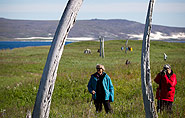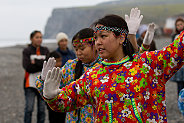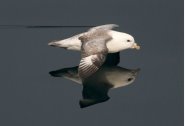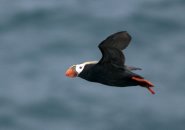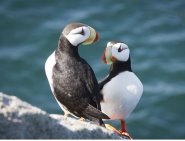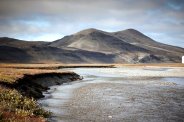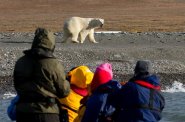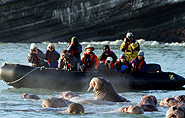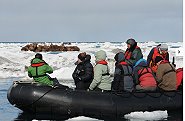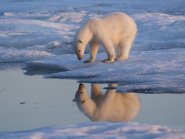The Legendary North-East Passage
From NE-Siberia to Murmansk
ITINERARY
Day 0: Flight to Anadyr (Chukotka) via Moscow)
Day 0: Flight to Anadyr (Chukotka) via Moscow)
Day 1: Anadyr
Join the Akademik Shokalskiy in the Port of Anadyr this afternoon and depart. After sailing there will be introductions to ship and crew.
Day 2: At Sea
Crossing the Gulf of Anadyr there will be opportunities for pelagic birding, marine mammal watching and lectures.
Join the Akademik Shokalskiy in the Port of Anadyr this afternoon and depart. After sailing there will be introductions to ship and crew.
Day 2: At Sea
Crossing the Gulf of Anadyr there will be opportunities for pelagic birding, marine mammal watching and lectures.
Day 3: Whale Bone Alley and Gil’mimyl Hot Springs
We visit Whale Bone Alley on Yttygran Island, one of the most significant and intriguing archaeological sites in the Arctic. This afternoon we plan a landing at the Gil’mimyl Hot Springs.
Day 4: Cape Dezhnev and Uelen Village
Early this morning we will be at Cape Dezhnev, the eastern extremity of the Eurasian continent. This afternoon we visit the nearby village of Uelen. Here we enjoy the hospitality of the local people who are predominantly Chukchi and enjoy a cultural performance and visit the bone-carving studio.
We visit Whale Bone Alley on Yttygran Island, one of the most significant and intriguing archaeological sites in the Arctic. This afternoon we plan a landing at the Gil’mimyl Hot Springs.
Day 4: Cape Dezhnev and Uelen Village
Early this morning we will be at Cape Dezhnev, the eastern extremity of the Eurasian continent. This afternoon we visit the nearby village of Uelen. Here we enjoy the hospitality of the local people who are predominantly Chukchi and enjoy a cultural performance and visit the bone-carving studio.
Day 5: Kolyuchin Island
Early this morning we will pass close by the place where the Swedish explorer Adolf Erik Nordenskiold wintered over in 1878. Later this morning we plan to land on Kolyuchin Island, where there is an abandoned Polar research and weather station. There are some terrific bird cliffs where it is possible to get some great photos of puffins, guillemots and gulls.
Days 6 to 8: Wrangel Island
Wrangel Island is one of those islands that you have to visit to appreciate. It is a Federal Nature Reserve of international significance and importance and also a World Heritage Site. A lot of its significance lies in the fact that it is a major Polar Bear denning area. It is also the last landfall for migratory species flying north. Each summer thousands of birds migrate here to breed, including Snow Geese, Snowy Owls, skuas, Arctic Terns, Ross’s, Sabine’s and Ivory Gulls.
Early this morning we will pass close by the place where the Swedish explorer Adolf Erik Nordenskiold wintered over in 1878. Later this morning we plan to land on Kolyuchin Island, where there is an abandoned Polar research and weather station. There are some terrific bird cliffs where it is possible to get some great photos of puffins, guillemots and gulls.
Days 6 to 8: Wrangel Island
Wrangel Island is one of those islands that you have to visit to appreciate. It is a Federal Nature Reserve of international significance and importance and also a World Heritage Site. A lot of its significance lies in the fact that it is a major Polar Bear denning area. It is also the last landfall for migratory species flying north. Each summer thousands of birds migrate here to breed, including Snow Geese, Snowy Owls, skuas, Arctic Terns, Ross’s, Sabine’s and Ivory Gulls.
Day 9: East Siberian Sea
This sea occupies the area between the Novosibirskie Islands and Wrangel Island. Three of Siberia’s major rivers flow into it – the Indigirka, Alazaya and the Kolyma. It was in this sea that the Soviet vessel Chelyuskin with 111 people on board became trapped in ice and sank in 1934.
This sea occupies the area between the Novosibirskie Islands and Wrangel Island. Three of Siberia’s major rivers flow into it – the Indigirka, Alazaya and the Kolyma. It was in this sea that the Soviet vessel Chelyuskin with 111 people on board became trapped in ice and sank in 1934.
Day 10: Ayon Island and Village
This island and village is home to a small group of Chukchi Reindeer herders. We enjoy their hospitality and learn about reindeer herding.
Day 11: Medvezhyi Islands
There are no permanent settlements on these little known and seldom visited islands. They are covered in tundra and known to have a good population of Polar Bears.
This island and village is home to a small group of Chukchi Reindeer herders. We enjoy their hospitality and learn about reindeer herding.
Day 11: Medvezhyi Islands
There are no permanent settlements on these little known and seldom visited islands. They are covered in tundra and known to have a good population of Polar Bears.
Day 12: East Siberian Sea
It was in this sea that the Jeannette, captained by George Washington De Long, became stuck fast in ice, drifted and was crushed and sunk in 1881. Wreckage from the Jeanette was found in Greenland in 1884 giving Amundsen the idea for the now famous 1893-96 Fram Expedition.
Days 13 to 15: Novaya Sibirskiye (New Siberian Islands)
These islands mark the border between the Laptev and East Siberian Seas and consist of three major groups: Southern, Central (Anzhu) and Northern (De Long) Group. The islands are virtually unexplored and are uninhabited apart from the researchers at a couple of weather stations. We will explore the islands with a number of landings in search of Arctic flora and wildlife
It was in this sea that the Jeannette, captained by George Washington De Long, became stuck fast in ice, drifted and was crushed and sunk in 1881. Wreckage from the Jeanette was found in Greenland in 1884 giving Amundsen the idea for the now famous 1893-96 Fram Expedition.
Days 13 to 15: Novaya Sibirskiye (New Siberian Islands)
These islands mark the border between the Laptev and East Siberian Seas and consist of three major groups: Southern, Central (Anzhu) and Northern (De Long) Group. The islands are virtually unexplored and are uninhabited apart from the researchers at a couple of weather stations. We will explore the islands with a number of landings in search of Arctic flora and wildlife
Days 16 to 17: Crossing the Laptev Sea
This sea is bounded in the west by the Taymyr and the Severnaya Islands and the Novosibirskie Islands in the east. Look out for the Laptev Sea Walrus known only in this sea.
Days 18 to 20: Severnaya Zemlya Archipelago
The Severnaya Zemlya Islands are on the border of the Kara and Laptev Seas and are an extension of the Taimyr Peninsula. The islands were not discovered until 1914-15 by the Russian explorer Vilkitski. They are heavily glaciated with deep fiords and majestic glaciers which make them magnificent for cruising. There is also a great selection and abundance of Arctic wildlife including Polar Bears, Arctic Foxes, Arctic Hares and walruses.
This sea is bounded in the west by the Taymyr and the Severnaya Islands and the Novosibirskie Islands in the east. Look out for the Laptev Sea Walrus known only in this sea.
Days 18 to 20: Severnaya Zemlya Archipelago
The Severnaya Zemlya Islands are on the border of the Kara and Laptev Seas and are an extension of the Taimyr Peninsula. The islands were not discovered until 1914-15 by the Russian explorer Vilkitski. They are heavily glaciated with deep fiords and majestic glaciers which make them magnificent for cruising. There is also a great selection and abundance of Arctic wildlife including Polar Bears, Arctic Foxes, Arctic Hares and walruses.
Days 21 to 22: Kara Sea
The Kara Sea is one of the coldest seas in Russia. It lies between Novaya Zemlay, Franz Josef and Severnaya Zemlya Archipelago.
Days 23 to 25: Franz Josef Land
This is a huge archipelago of 192 islands located only 10 degrees from the North Pole. They were named in 1870 after the Hungarian Emperor when they were discovered by the Austro-Hungarian Payer-Weyprecht Expedition that was searching for the NE Passage. During our time here we plan multiple landings in search of history, wildlife and flora.
The Kara Sea is one of the coldest seas in Russia. It lies between Novaya Zemlay, Franz Josef and Severnaya Zemlya Archipelago.
Days 23 to 25: Franz Josef Land
This is a huge archipelago of 192 islands located only 10 degrees from the North Pole. They were named in 1870 after the Hungarian Emperor when they were discovered by the Austro-Hungarian Payer-Weyprecht Expedition that was searching for the NE Passage. During our time here we plan multiple landings in search of history, wildlife and flora.
Days 26 to 27: Barents Sea
This sea is named in honour of Dutch Seafarer and navigator Willem Barents who explored the region on two separate expeditions in 1594 and 1596. We will keep a look out for marine mammals and of course seabirds.
Day 28: Murmansk
The expedition finishes in Murmansk. We will disembark and transfer to Kirkenes (Norway)
Flight to your home destination..
This sea is named in honour of Dutch Seafarer and navigator Willem Barents who explored the region on two separate expeditions in 1594 and 1596. We will keep a look out for marine mammals and of course seabirds.
Day 28: Murmansk
The expedition finishes in Murmansk. We will disembark and transfer to Kirkenes (Norway)
Flight to your home destination..
Day 29: Return fligtht
Important Note: These expeditions are subject to approval from various Russian Federal and Regional Authorities and may have to change depending on these approvals. Permits have been lodged for all the sites mentioned in the itinerary, depending on approvals these may have to be amended or substituted. We will endeavour to keep participants fully informed of any changes in the itinerary as and when they occur


